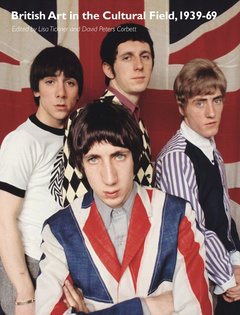Description
British art in the cultural field, 1939-69 (series: art history special issues) (paperback)
Art History Special Issues Series
Coordinators: Tickner Lisa, Peters Corbett David
Language: English
200 p. · 21.1x27.7 cm · Paperback
Description
/li>Contents
/li>Biography
/li>
6 Notes on Contributors
8 Chapter 1 Being British and Going … Somewhere
Lisa Tickner and David Peters Corbett
18 Chapter 2 ‘The morrow we left behind’: Landscape and the Rethinking of Modernism, 1939–53
Chris Stephens
36 Chapter 3 Sculpture for the Hand: Herbert Read in the Studio of Kurt Schwitters
Megan R. Luke
54 Chapter 4 Science, Art and Landscape in the Nuclear Age
Catherine Jolivette
72 Chapter 5 Photography into Building in Post-war Architecture: The Smithsons and James Stirling
Claire Zimmerman
90 Chapter 6 Realism, Brutalism, Pop
Alex Potts
116 Chapter 7 The Independent Group’s ‘Anthropology of Ourselves’
Catherine Spencer
138 Chapter 8 Dada’s Mama: Richard Hamilton’s Queer Pop
Jonathan D. Katz
156 Chapter 9 Francis Bacon: Painting after Photography
Martin Hammer
174 Chapter 10 Vulgar Pictures: Bacon, de Kooning, and the Figure under Abstraction
Andrew R. Lee
196 Chapter 11 ‘Export Britain’: Pop Art, Mass Culture and the Export Drive
Lisa Tickner
222 Chapter 12 Painting and Sculpture of a Decade ’54–’64 Revisited
Andrew Stephenson
244 Chapter 13 Varieties of Belatedness and Provincialism: Decolonization and British Pop
Leon Wainwright
265 Index
Lisa Tickner is Professor Emerita of Art History at Middlesex University and Visiting Professor at the Courtauld Institute of Art where she teaches an MA on ‘Modernism in Britain, 1890–1970’. She is the author of four books, the co-editor of four more, and has published widely on topics in nineteenth- and twentieth-century British art history. Her publications include: Hornsey 1968: The Art School Revolution (2008); Dante Gabriel Rossetti (2003); Modern Life and Modern Subjects: British Art in the Early Twentieth Century (2000); and The Spectacle of Women: Imagery of the Suffrage Campaign, 1907–1914 (1988). She is a Fellow of the British Academy and a Trustee of the Art Fund.
David Peters Corbett is Professor of Art History and American Studies, and Executive Dean of the Faculty of Arts and Humanities at the University of East Anglia. Editor of the journal Art History (2007-12), he has written widely on English and American art between 1850 and 1950 and is the author of The World in Paint: Modern Art and Visuality in England, 1848–1914 (2004); The Geographies of Englishness: Landscape and the National Past, 1880–1940 (2002); Walter Sickert (2001); and The Modernity of English Art, 1914-1930 (1997).




